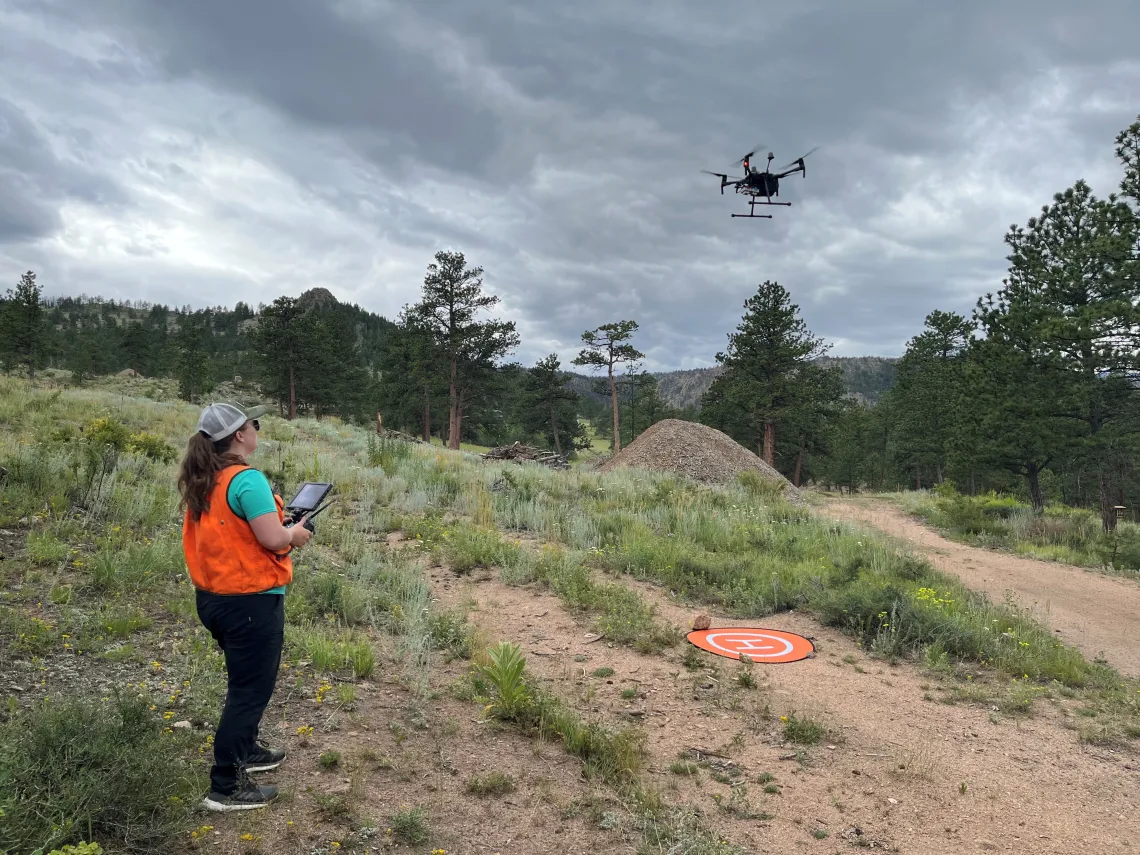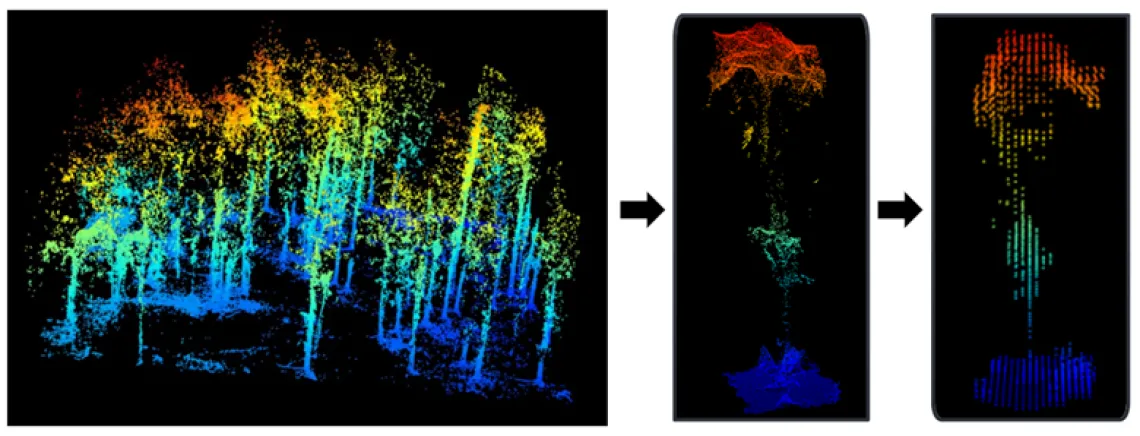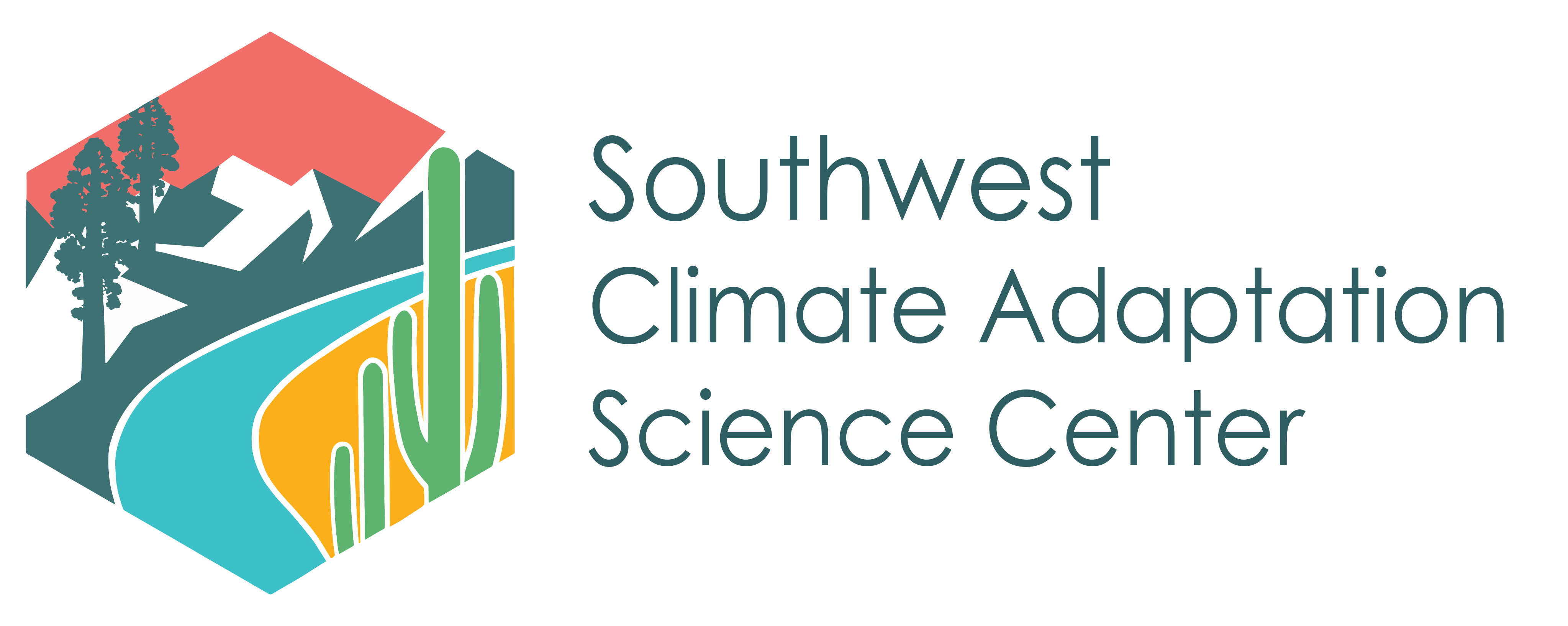From Fellows to Teammates: The Development of Fellow Cohesion Through Team Science Trainings

Lauren in the field flying a DJI Matrice with a multispectral camera. This flight will provide imagery to test her models of individual tree drought stress.
I have been working on my Ph.D. at Colorado State University since the fall of 2020 and I am grateful to spend the last year of my Ph.D. as a Natural Resources Workforce Development (NRWD) Fellow with the Southwest Climate Adaptation Science Center (SW CASC). My research focuses on the use of high-resolution remote sensing to classify drought stress, crown scorch, and fire effects in forests. A major focus of my work is to develop products with real-world applications that increase the information available for decision-making. I was drawn to the NRWD Fellowship program because of the focus on applied science, and the interdisciplinary nature of the projects. Prior to graduate school, I worked on applied science projects through the NASA DEVELOP program and learned the value of science that has real-world applications. While graduate school is often an individual endeavor, programs like the NRWD Fellowship provide opportunities to learn how to work on scientific research teams and communicate to people with diverse backgrounds and skillsets.
As part of the NRWD Fellowship, we spent two days at Utah State University in an American Institute of Biological Sciences Team Workshop learning about convergent science, how to build team rapport, and how to overcome barriers to success. This workshop involved two days of team building training as well as discussions on how to conduct transdisciplinary projects that involve the public. An important takeaway was the utility of using a quality improvement cycle when working with societal partners. This improvement cycle has 4 main steps: Plan, Do, Check, Act. For projects to be successful, this cycle should be repeated until collaborators reach a consensus and project needs are met. This is something we, as fellows, have implemented throughout our project.
At each meeting, the cohort puts to use the lessons we learned in the team science workshop. We alternate who leads and who takes notes during meetings, allowing us to practice leading effective meetings, guiding group decision-making, and writing comprehensive meeting reports, essential skills for this project and our future careers. Between the team science training and the positive attitudes of the fellows, this cohort has felt like a team from the first project meeting. We are all motivated to complete a project that will inform and assist ranch and rangeland managers working in the arid Southwest. We are now about halfway through our fellowship and it is incredible to note the growth that we have all displayed in our collaboration and leadership skills. I am so grateful to be part of such a dedicated and friendly cohort and I can’t wait to share our project later this year.

The processing workflow used for extracting individual tree values from flight imagery. From a full forest point cloud (left) individual trees are extracted (middle) and segmented into voxels (right) for analysis.

